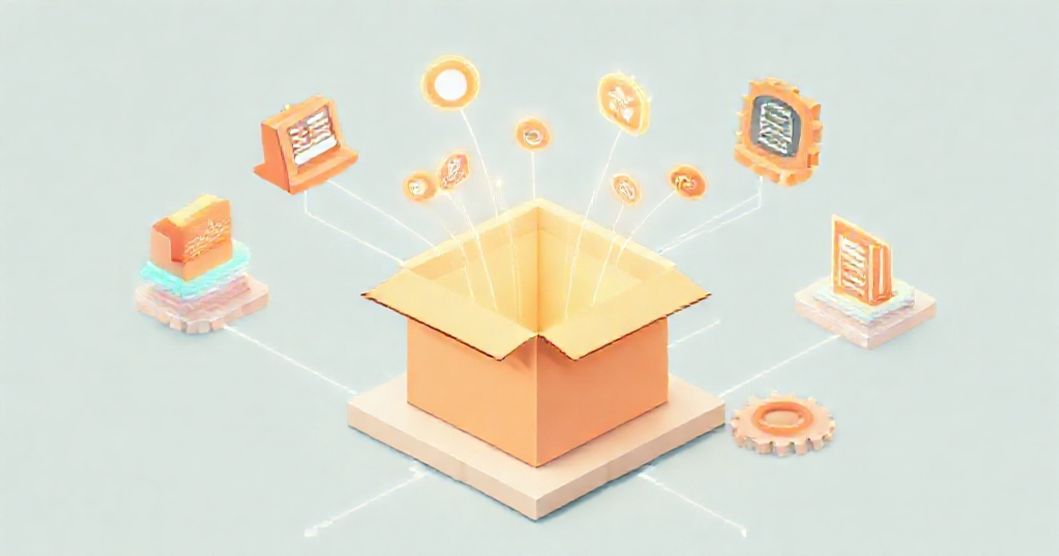For many creative entrepreneurs, Etsy serves as a vibrant marketplace to showcase unique handmade goods, vintage finds, and craft supplies. As a shop grows, however, managing orders, inventory, shipping, and finances can quickly become complex. This is where strategic Etsy integrations become indispensable. By connecting your Etsy shop with specialized software and platforms, sellers can automate routine tasks, centralize critical data, and significantly enhance operational efficiency, allowing more time for creation and customer engagement.
Understanding Etsy Integrations for Enhanced Selling
Etsy integrations refer to the process of linking your Etsy store with various third-party applications and services. These tools are designed to extend Etsy’s core functionalities, addressing specific business needs like inventory tracking, shipping logistics, financial reporting, and marketing efforts. Implementing the right integrations transforms manual, time-consuming processes into streamlined, automated workflows, crucial for scaling your business and maintaining profitability.
The goal of leveraging these integrations is to create a cohesive ecosystem around your Etsy shop. This interconnected approach minimizes errors, reduces administrative burdens, and provides valuable insights into your sales performance. Effective integration management allows sellers to focus on product development and customer service, rather than getting bogged down in repetitive daily tasks that can often slow growth.
1. Seamless Inventory Management Integration
Managing inventory is a core challenge for many Etsy sellers, especially those with multiple sales channels or unique, one-of-a-kind items. Inventory management integrations sync your stock levels across Etsy and any other platforms you use, preventing overselling and ensuring accurate product availability. This real-time synchronization is vital for maintaining customer satisfaction and avoiding order cancellations due to unavailable items.
These tools often provide detailed insights into your most popular products, helping you make informed decisions about restocking and production. For sellers dealing with raw materials for handmade items, such integrations can even track component stock, alerting you when it’s time to reorder supplies. This level of control optimizes your production schedule and capitalizes on demand, directly impacting your overall profitability.
2. Efficient Shipping and Fulfillment Integrations
Shipping logistics can consume a significant portion of an Etsy seller’s time. Shipping and fulfillment integrations automate label printing, generate tracking numbers, and often facilitate discounted shipping rates from various carriers. These tools streamline the entire post-sale process, from order pickup to delivery, enhancing the customer experience through faster and more reliable shipping.
Many popular shipping platforms offer direct Etsy integration, allowing sellers to manage all their orders in one dashboard. This centralized approach simplifies bulk label creation, customs documentation for international orders, and package tracking. By reducing the manual effort involved in shipping, sellers can process more orders efficiently, which is particularly beneficial during peak seasons or promotional events.
3. Robust Accounting and Financial Integrations
Keeping accurate financial records is essential for any business, and Etsy sellers are no exception. Accounting integrations connect your Etsy sales data directly to your preferred accounting software, automating transaction recording, expense tracking, and revenue reporting. This eliminates the need for manual data entry, significantly reducing the risk of errors and saving valuable time during tax season.
These integrations provide a clear overview of your financial health, making it easier to monitor profitability, analyze costs, and forecast future earnings. They can automatically categorize Etsy fees, shipping costs, and advertising expenses, offering a comprehensive picture of your net income. For sellers, understanding these metrics is paramount for strategic pricing and long-term business planning.
4. Print-on-Demand (POD) Integrations for Product Expansion
Print-on-demand (POD) integrations allow Etsy sellers to offer a wide range of custom-designed products without holding any physical inventory. When a customer places an order, the integration automatically sends the design and order details to a POD service, which then prints, packages, and ships the product directly to the customer. This model is ideal for artists, designers, and creators looking to expand their product lines to include items like apparel, mugs, phone cases, and wall art.
The primary advantage of POD integration is the minimal upfront investment and reduced risk. Sellers only pay for products when an order is placed, eliminating inventory costs and storage needs. Profitability rates with POD can range from 20% to 40% per item, depending on the product’s base cost and your chosen retail price, offering a flexible way to diversify your offerings and reach new customer segments.
5. Strategic Marketing and CRM Integrations
Building strong customer relationships and executing effective marketing campaigns are vital for sustained growth. Marketing and Customer Relationship Management (CRM) integrations enable Etsy sellers to automate email marketing, manage customer interactions, and analyze campaign performance. These tools help in nurturing leads, driving repeat purchases, and building a loyal customer base beyond the initial Etsy transaction.
For instance, an email marketing integration can automatically add new Etsy customers to your mailing list, allowing you to send newsletters, promotional offers, or follow-up messages. CRM integrations help track purchase history, communication logs, and customer preferences, enabling personalized marketing efforts. This targeted approach can significantly boost conversion rates and foster stronger brand loyalty among your buyers.
6. Etsy to E-commerce Platform Integrations: Multichannel Selling
Many Etsy sellers eventually consider expanding to their own independent e-commerce website, often powered by platforms like Shopify or WooCommerce. Integrating Etsy with these platforms allows for seamless multichannel selling, synchronizing products, orders, and inventory across all your storefronts. This approach provides the best of both worlds: access to Etsy’s vast marketplace audience and the brand control of your own website.
These integrations ensure that an item sold on Etsy is automatically updated as out of stock on your Shopify store, and vice versa. This prevents stock discrepancies and simplifies order management from a single dashboard. Multichannel selling diversifies your sales channels, reduces reliance on a single platform, and often leads to increased overall sales volume and brand visibility.
7. Choosing the Right Etsy Integration Tools
Selecting the most suitable Etsy integration tools requires careful consideration of your specific business needs, budget, and growth aspirations. Evaluate factors such as the features offered, the ease of setup and use, compatibility with your existing systems, and the quality of customer support. Many integration solutions offer free trials, allowing you to test their functionalities before committing to a subscription.
Consider the scalability of the integration: can it grow with your business? Review pricing models, which typically range from monthly subscriptions (e.g., $10-$50 for basic plans) to annual commitments, or transaction-based fees. Prioritizing tools that offer robust functionality, strong reliability, and excellent user reviews will ensure that your investments in integration truly contribute to your Etsy shop’s success and operational efficiency.
Empowering Your Etsy Business with Strategic Integrations
Embracing Etsy integrations is a pivotal step for any seller aiming to professionalize operations, enhance customer satisfaction, and achieve sustainable growth. By intelligently connecting your shop with the right tools for inventory, shipping, accounting, marketing, or multichannel sales, you unlock significant efficiencies. These integrations transform time-consuming tasks into automated processes, freeing you to focus on what you do best: creating exceptional products and building meaningful connections with your customers. Strategic integration is not merely about convenience; it is about building a robust, scalable, and resilient Etsy business for the long term.




